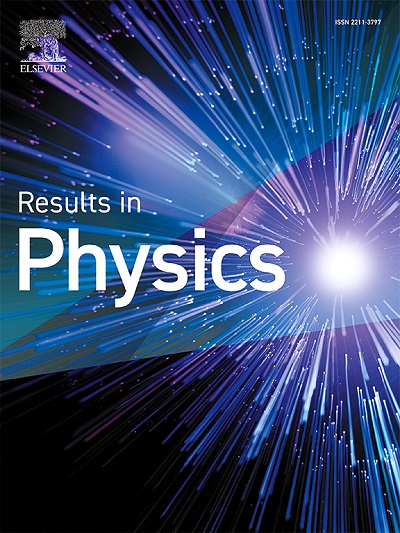Triple (FAMACs) cation perovskite single crystal for enhanced photosensitive properties of photodetectors
IF 4.4
2区 物理与天体物理
Q2 MATERIALS SCIENCE, MULTIDISCIPLINARY
引用次数: 0
Abstract
Perovskite single crystals (PSCs) are intriguing choices for various optoelectronic device applications, such as photo-detectors, solar cells, and LEDs. Triple-cation mixed-halide perovskites exhibit better (phase, thermal, and environmental) stability, then the traditional perovskites based on single cation, and single halide anion. In this work, novel triple-cation mixed-halide PSCs, i.e., FA0.85MA0.10Cs0.05Pb(I0.95Br0.05)3 was synthesized via ACN antisolvent additive-based inverse temperature crystallization (ITC) and its wavelength-dependent photoresponse was investigated. The PSCs exhibited a bandgap energy of 1.45 eV, with a strong photoluminescence emission peak. The crystallinity and morphology of the PSCs were investigated using an X-ray diffractometer (XRD), and scanning electron microscopy (SEM). The PSCs photodetector demonstrated remarkable responsivity of and detectivity at 532 nm wavelength. Photocurrent measurements were performed using lasers with 532 nm and 376 nm wavelengths. Under bias voltage applied, the 532 nm laser generated a maximum current of 113 µA, demonstrating superior performance compared to reported photodetectors based on PCSs and perovskite thin films. Collectively, this work opens up a new avenue for enhanced photosensitive photodetectors based on PSCs.
三(FAMACs)阳离子钙钛矿单晶用于增强光电探测器的光敏性能
钙钛矿单晶(PSCs)是各种光电器件应用的有趣选择,如光电探测器,太阳能电池和led。三阳离子混合卤化物钙钛矿比传统的单阳离子、单卤化物阴离子钙钛矿具有更好的相稳定性、热稳定性和环境稳定性。本文采用ACN抗溶剂添加剂为基础的逆温度结晶(ITC)技术合成了新型三阳离子混合卤化物PSCs FA0.85MA0.10Cs0.05Pb(I0.95Br0.05)3,并研究了其波长依赖性光响应。PSCs的带隙能量为1.45 eV,具有较强的光致发光峰。利用x射线衍射仪(XRD)和扫描电子显微镜(SEM)研究了PSCs的结晶度和形貌。在532 nm波长处,PSCs光电探测器的响应率为11.77,检出率为7.62×1011。使用波长分别为532 nm和376 nm的激光器进行光电流测量。在施加偏置电压的情况下,532 nm激光器产生的最大电流为113µa,与基于PCSs和钙钛矿薄膜的光电探测器相比,显示出优越的性能。总的来说,这项工作为基于psc的增强型光敏光电探测器开辟了一条新的途径。
本文章由计算机程序翻译,如有差异,请以英文原文为准。
求助全文
约1分钟内获得全文
求助全文
来源期刊

Results in Physics
MATERIALS SCIENCE, MULTIDISCIPLINARYPHYSIC-PHYSICS, MULTIDISCIPLINARY
CiteScore
8.70
自引率
9.40%
发文量
754
审稿时长
50 days
期刊介绍:
Results in Physics is an open access journal offering authors the opportunity to publish in all fundamental and interdisciplinary areas of physics, materials science, and applied physics. Papers of a theoretical, computational, and experimental nature are all welcome. Results in Physics accepts papers that are scientifically sound, technically correct and provide valuable new knowledge to the physics community. Topics such as three-dimensional flow and magnetohydrodynamics are not within the scope of Results in Physics.
Results in Physics welcomes three types of papers:
1. Full research papers
2. Microarticles: very short papers, no longer than two pages. They may consist of a single, but well-described piece of information, such as:
- Data and/or a plot plus a description
- Description of a new method or instrumentation
- Negative results
- Concept or design study
3. Letters to the Editor: Letters discussing a recent article published in Results in Physics are welcome. These are objective, constructive, or educational critiques of papers published in Results in Physics. Accepted letters will be sent to the author of the original paper for a response. Each letter and response is published together. Letters should be received within 8 weeks of the article''s publication. They should not exceed 750 words of text and 10 references.
 求助内容:
求助内容: 应助结果提醒方式:
应助结果提醒方式:


